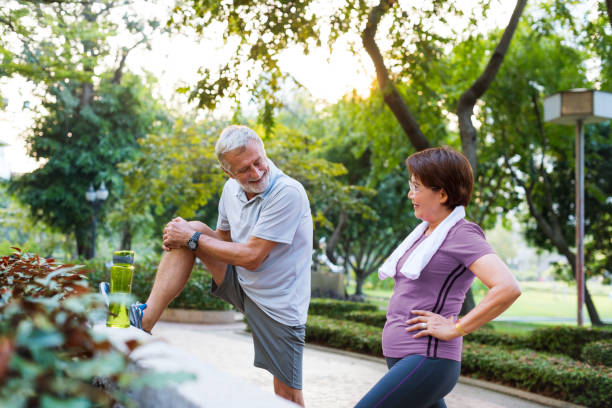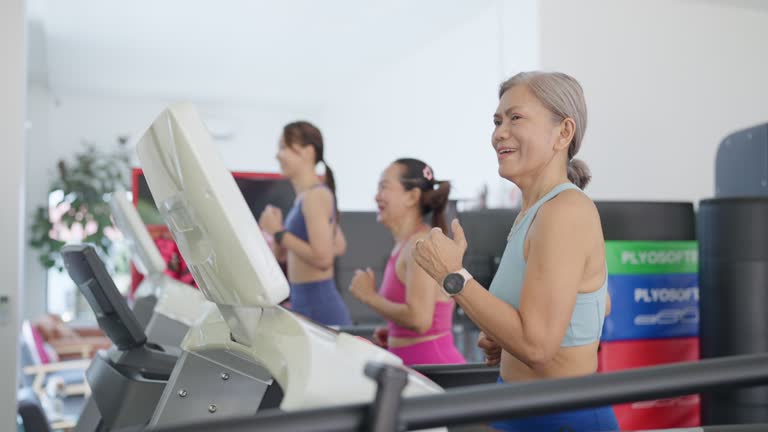Aging gracefully is about more than just maintaining physical health; it’s also about nurturing mental and social well-being. For seniors, group exercise offers a holistic approach to staying active, connected, and mentally sharp. Whether it’s a water aerobics class, a walking club, or yoga sessions, group fitness activities provide a wealth of benefits that extend far beyond the physical.
Let’s explore why group exercise is a cornerstone for seniors’ well-being.
Contents
Physical Health Benefits
1. Improved Cardiovascular Health
Heart disease remains a leading concern for older adults, but regular group exercise can reduce the risk significantly. Aerobic activities like group cycling or Zumba can improve circulation, lower blood pressure, and strengthen the heart. Having a structured schedule and the motivation of peers often helps seniors stick to routines, amplifying these cardiovascular benefits.
2. Enhanced Strength and Flexibility
Group strength training or yoga classes are excellent for maintaining muscle mass, flexibility, and balance—all crucial for reducing the risk of falls. Many group classes are designed with seniors in mind, incorporating modified exercises that cater to varying fitness levels.
3. Better Bone Density
Bone health is another critical concern as we age, with conditions like osteoporosis becoming more prevalent. Weight-bearing group activities, such as dancing or tai chi, can increase bone density and reduce the risk of fractures.
Mental and Emotional Well-Being

1. Reduced Stress and Anxiety
Participating in group exercise is a natural mood booster. Physical activity releases endorphins, which combat stress and enhance feelings of well-being. The social aspect adds layer of stress relief, as engaging with others creates a sense of belonging and support.
2. Cognitive Stimulation
Keeping the brain active is just as important as maintaining physical health. Group exercises that require coordination and memory, such as dance or choreographed routines, engage the mind and help slow cognitive decline.
3. Combating Loneliness
Social isolation is a significant challenge for seniors, especially for those living alone or with limited mobility. Group exercise fosters connections and friendships, helping seniors feel less lonely and more engaged in their communities.
Social Benefits
1. Building a Sense of Community
Group exercise environments foster camaraderie and mutual encouragement. Whether it’s sharing a laugh during a yoga pose or cheering each other on in a cycling class, these interactions help seniors form meaningful relationships.
2. Accountability and Motivation
Exercising in a group setting often leads to better adherence to fitness routines. Knowing that others are counting on your presence can provide the motivation needed to stay consistent, which is crucial for long-term health benefits.
3. Opportunities for Intergenerational Interaction
Many fitness groups include participants from various age ranges, offering seniors a chance to interact with younger generations. This dynamic can boost energy levels, provide new perspectives, and foster a sense of vitality.
Types of Group Exercises for Seniors
1. Water-Based Activities
Water aerobics or swimming classes are gentle on the joints and provide an excellent cardiovascular workout. The buoyancy of water reduces strain on the body, making it ideal for seniors with arthritis or joint pain.
2. Dance Classes
Dancing not only improves coordination and balance but also provides an enjoyable way to stay active. Classes like ballroom dancing or Zumba Gold (tailored for seniors) combine fitness with fun.
3. Walking Groups
Walking is one of the simplest yet most effective exercises for seniors. Joining a walking group adds a social component, turning a solo activity into a shared experience.
4. Chair Yoga and Pilates
These low-impact classes improve flexibility, core strength, and balance while accommodating those with mobility issues.
5. Tai Chi and Qigong
These ancient practices focus on slow, deliberate movements, improving balance, reducing stress, and enhancing overall well-being.
Tips for Getting Started
- Consult a Healthcare Provider: Before starting any new exercise program, it’s essential for seniors to consult with their doctors to ensure the activities are safe and appropriate for their fitness levels.
- Start Slowly: Joining a beginner-friendly class ensures a positive experience without the risk of overexertion.
- Choose Enjoyable Activities: Seniors are more likely to stick with activities they enjoy, so exploring various options can help find the perfect fit.
- Focus on Community Centers or Senior-Specific Programs: Many community centers offer classes designed specifically for older adults, ensuring a supportive and understanding environment.
Real-Life Stories: The Transformative Power of Group Exercise
Consider Jane, a 68-year-old retiree who felt isolated after her children moved away. She joined a weekly water aerobics class and discovered a supportive community. Not only has her physical fitness improved, but she’s also made lasting friendships that keep her socially active and emotionally fulfilled.
Similarly, Bob, a 72-year-old widower, found joy in a seniors’ hiking group. The regular walks through nature revitalized his spirit and gave him a renewed sense of purpose.
Conclusion: More Than Just Fitness
Group exercise is much more than a workout; it’s a pathway to holistic well-being for seniors. It improves physical health, sharpens the mind, and nurtures the spirit through social connections and shared experiences. Whether through water aerobics, yoga, or walking clubs, group exercise empowers seniors to lead healthier, happier lives.
Encouraging older adults to participate in group fitness activities not only enhances their quality of life but also builds stronger, more connected communities. So why wait? Embrace the joy of group exercise today and unlock the vitality within!

